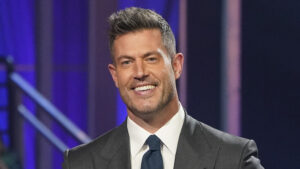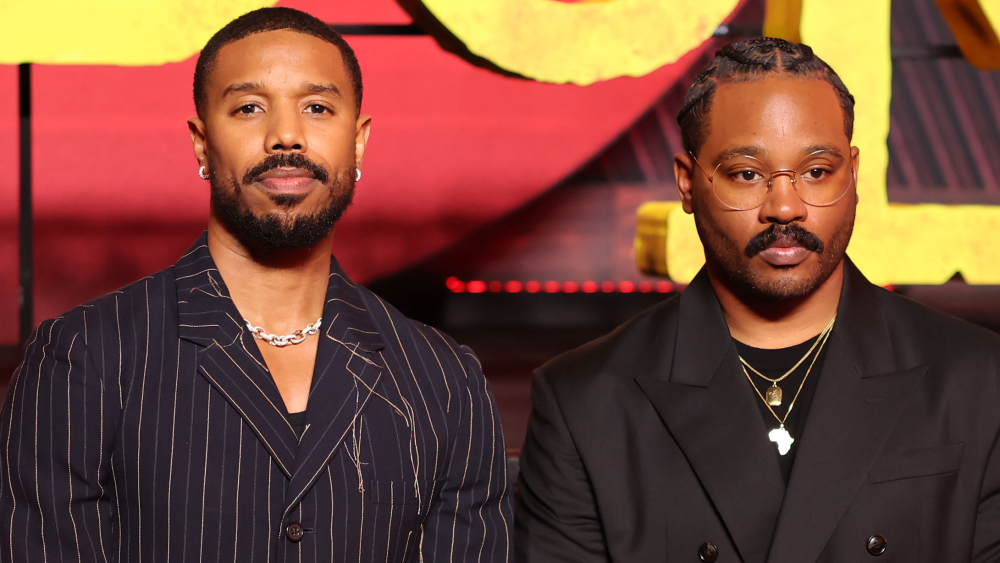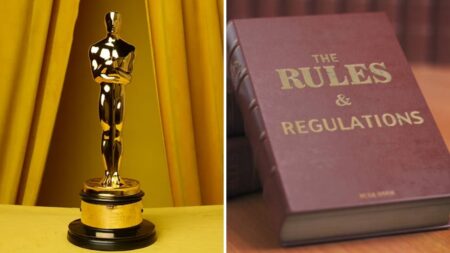“Sinners” director Ryan Coogler has penned an emotional open letter thanking fans for showing up in droves to see the film in theaters, writing that his heart is “bursting” with “eternal gratitude.”
Coogler’s movie, starring Michael B. Jordan as the Smokestack twins, won the weekend, grossing $48 million domestically and $63 million globally.
The only way they got to that figure, the filmmaker writes, was thanks to the fans who bought a ticket: those “who decided to drive to see the film in different formats. Who bought popcorn and a drink, booked a sitter and carpooled, and stood in the lobby afterwards and talked and made a friend. Who changed their work schedules. Who saw the film in groups. … who watched more than once, who recommended the film to others, both in person and on social media or on your text message chains.”
In the typed letter, Coogler writes about what it meant to have “the gift of the opportunity of making a film inspired by my family and my ancestry,” but how he was equally driven by a desire to please theatergoers. “We always had our minds on you, the audience, and felt a deep responsibility to entertain you, and move you in the way only cinema can,” he writes. “I believe in cinema. I believe in the theatrical experience. I believe it is a necessary pillar of society. It’s why me and so many of my colleagues have dedicated our lives to the craft. We don’t get to do what we do if you don’t show up.”
He continues: “The global theatrical audience has allowed me to dream, find a career, and build a more sustainable life for me and my family. And the only way that I know how to thank you for that, is by continuing to mine my personal human experience and my relationships for more stories to bring to you in cinematic language. To see your response to the film has re-invigorated me and many others who believe in this art form.”
Coogler’s overarching sentiment was simple — audiences showing up to theaters the way they did for “Sinners” begets more opportunity for filmmakers to take big swings like it in the future. “Together maybe we can expand the definition of what a blockbuster is, what a horror movie is, and of what an Imax audience looks like,” he writes. “I’ll see you at the movies, popcorn bucket in hand!”
In addition to thanking the fans, Coogler also lists off a slew of his cinematic influences for the movie, which included but were not limited to: “Spike Lee, John Singleton, Ernie Barnes, Steve McQueen, Ava Duvernay, Euzhan Palcy, Eudora Welty, Oscar Micheaux, Robert Rodriguez, Barry Jenkins, Quentin Tarantino, Nicolas Roeg, Andrea Arnold, Jeremy Saulnier, Paul Thomas Anderson, Joel and Ethan Coen, Bill Gunn, Jordan Peele, John Carpenter, Boots Reilly, Shaka King, Nia Dacosta, Terence Nance, Rian Johnson, Bradford Young, David Cronenberg, David Lynch, Chris Nolan, Emma Thomas, Theodore Witcher, Francis Coppola, Julie Dash, Steven Spielberg, Kahlil Joseph, Mati Diop, Ben and Josh Safdie, Stephen King, Robert Palmer, Amiri Baraka, Martin Scorsese, Brian De Palma, George Lucas, Ta-Nehisi Coates, Walter Mosley, Stephen Graham Jones, Joel Crawford, Wes Craven, and many others.”
As much of the movie’s press revolved around Coogler’s lengthy partnerships with Jordan (five movies over 13 years); composer Ludwig Göransson (17 years) and his producing partner and wife Zinzi Coogler (a “near lifelong partnership,” he writes), the filmmaker also made a point to spotlight his longtime editor Michael Shawver, who he’s been working with for 15 years. “Michael did EXCEPTIONAL work on this film that isn’t being talked about enough, and he missed the press tour to spend time with his beautiful kid,” Coogler writes.
The letter (pictured above) was presented with a photograph of Coogler’s family, including his aunt Sammie, for whom a central character is named, and his late uncle James, whose love of the blues was a major inspiration for the film.
“Blues music was like his life. He wasn’t a musician, but he was a listener, so that’s how I came to know the medium,” Coogler previously told Variety. “I would listen to it because I missed him; I’d listen to it to try to bring him back to life, so to speak.”
One song in particular — a track called “Wang Dang Doodle” — inspired the 1930s set movie.
“The song is the story of a group of people in a small community throwing a party and they all have nicknames that imply that they’re gangsters,” Coogler explained, pointing out that some of his fondest memories were the parties his family would throw back in the Bay. “I was like, ‘Oh, wouldn’t it be cool if I made a one-day movie — which is more my favorite type of movie — where it’s this group of people, and everybody who they get together is dangerous, but they meet something that’s more dangerous than they could ever imagine.”
The story centers on twins Smoke and Stack (Jordan), who return to their hometown in the Mississippi Delta to open a juke joint. They enlist their young cousin Sammie (newcomer Miles Caton), a sharecropper and the son of a preacher who yearns to become a blues musician, for the evening’s entertainment. But his preternatural talent attracts more than local revelers; vampires descend on the party, culminating in a bloody fight for freedom.
Read the full article here








